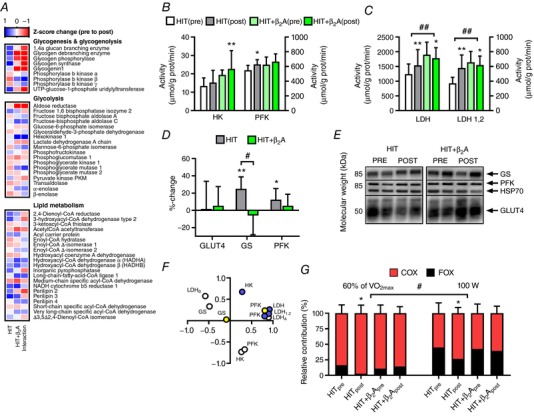Figure 4. Substrate choice during exercise and muscle metabolic enzymes in HIT and HIT+β2A.

Effect of 4 weeks of high intensity training with (HIT+β2A, n = 12) and without (HIT, n = 9) daily inhalation of terbutaline (4 mg day−1) on outcomes related to metabolism in trained men. A, heat map of mean Z‐score changes of the proteome related to glycogenesis, glycogenolysis, glycolysis and lipid metabolism with the intervention in HIT and HIT+β2A, as well as between‐group interaction (HIT+β2A – HIT). B and C, mean (±95% CI) maximal activity for hexokinase (HK), phosphofructokinase (PFK) and lactate dehydrogenase (LDH). D, mean (±95% CI) relative change in abundance of GLUT4, glycogen synthase (GS) and PFK determined by Western blotting. E, representative blots of GLUT4, GS and PFK. F, principal component analysis of intensity (log2‐expression) of GS, HK, LDHA, LDHB and PFK determined by proteomics (open circles), GS and PFK expression determined by Western blotting (yellow circles), and HK, LDH and PFK activity determined fluorumetrically (purple circles). G, mean (±95% CI) relative contribution of carbohydrate (COX; red bars) and fat oxidation (FOX; black bars) during cycling at 60% of maximal oxygen consumption (; left side) and at 100 W (right side). #Between‐group interaction (P ≤ 0.05). ##Between‐group interaction (P ≤ 0.01). *Within‐group difference from pre (P ≤ 0.05). **Within‐group difference from pre (P ≤ 0.01).
